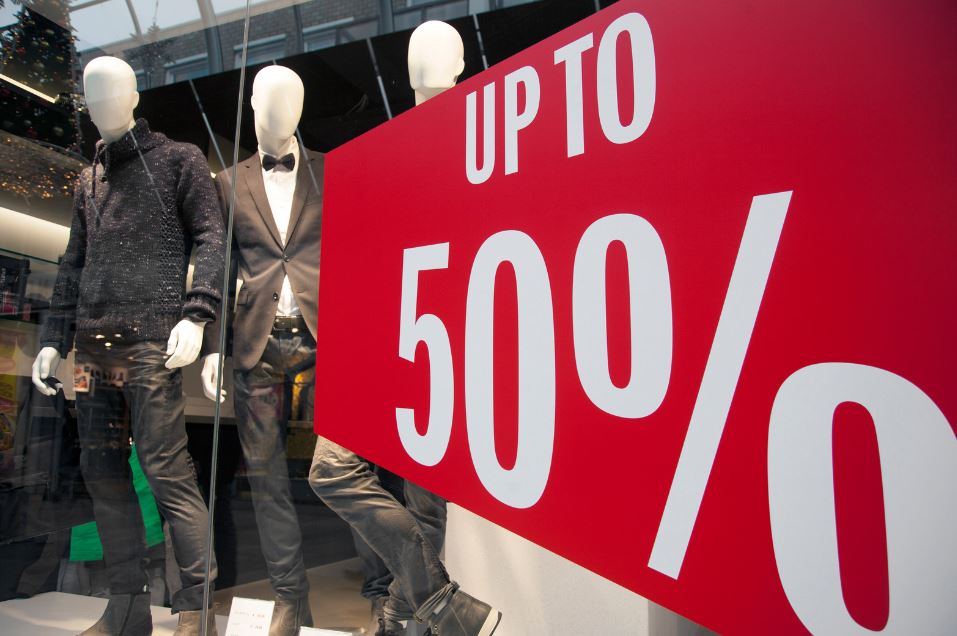January: When the value of customers goes through the roof
Is January still an important time for sales? How can retailers maximise returns during this time? Andrew Gorecki considers the strategies.
In speciality retail, January is traditionally the month of elevated returns of unwanted gifts, and retail employees taking well-deserved holidays – all set against a backdrop of a dip in sales.
Attempts to beat the cycle and generate extra sales in January through promotions and super deals do help retailers generate additional revenue, however, over the last few years, the rise of Black Friday and Cyber Monday, plus other ‘Peak’ trading days such as ‘Super Saturday’ has shifted this promotional pattern forward, well into December.
So, depressed sales in January will definitely recur, and retailers must ensure they have strategies in place to maximise every single consumer interaction during this challenging period.
Smart retailers realise that ‘sales’ cannot be increased directly.
To boost this KPI, retailers must increase one or more of the following multipliers: number of customers, number of customer visits, and then transaction value. When the number of visits drops, each visit needs extra attention from retailers, to increase the transaction value.
Brick-and-mortar retailers have an extra opportunity in this space as they can work with their store associates to generate add-on sales. Store teams can deliver experiences that only a physical store can offer.
Maximise the opportunity
If a retailer succeeds in boosting the average transaction value, more help will come.
With footfall figures showing that although retail footfall on Boxing Day was up 38.8% year-on-year, footfall was 27.7% lower in the week ending 31 December, than in the seven days leading up to Christmas - which does provide retailers with a challenge.
However, if retailers can entice shoppers into their stores, January 2023 may see an influx of shoppers returning to physical stores, generating extra revenue if retailers help them to tap into (always) eagerly awaited January sales, redeeming gift vouchers and spending Christmas money.
If executed well, through extra attention of store teams and attractive promotional deals, speciality retailers will create opportunities to recapture their regular customers' attention and build new customer relationships.
One way retailers can boost the opportunity to increase sales and customer sentiment requires smart use of technology to deliver connected retail experiences, such as mobile POS, click & collect, and the ability to return online purchases in stores. Such features bring customers into the stores, creating opportunities for interactions with store teams, to generate extra sales.
Shifting back to omnichannel
Over the past two years, many retailers became increasingly enthusiastic about eCommerce, with some seeing more success than others, all set against a media narrative suggesting a permanent shift away from brick-and-mortar stores, towards online.
However, as 2022 becomes a distant memory, the last six months have demonstrated that a large part of eCommerce growth during the COVID peak was not organic, but was more a reaction to restrictions on visiting brick-and-mortar stores.
Sales have been rebalancing across channels, as retailers seek to provide complementary retail services, offering experiences and integrating the physical and online store to deliver the very best consumer experience.
This shift also means that retailers need to invest in core store-level technology to help evolve their retail infrastructure and get into a position to better respond to changing customer demands and renewed interest in brick-and-mortar shopping.
Is January still important?
Question marks still linger over how high inflation will rise and just how deep a resultant recession will be, creating uncertainty in the retail market, which combines with a shift in consumer behaviour and industrial action to make January even more critical for retailers.
Why? Because they need to clear seasonal lines, not just to make room, but also to generate the cash flow needed to pay for Spring lines, ordered back in September and October – for which payment normally falls due in February and March.
Retailers need to be frugal with the extra cash made in December. If they can use it to avoid excessive discounts in January, they will position themselves to have a positive February and a good year overall.
With this said, we may see retailers shift away from blanket discount offers - replacing them with more targeted promotions to specific groups of customers, or linked promotions to higher margin lines - whilst looking to win new customers.
As for the future of the January sales event?
The start of a New Year will always bring with it optimism about what’s to come, and retailers need to be cognisant that consumers want value for money right now, more than in previous years, and tailor experiences and promotional strategies accordingly.
All whilst optimising their own cash flow to survive and thrive at this fragile time.
ENDS






